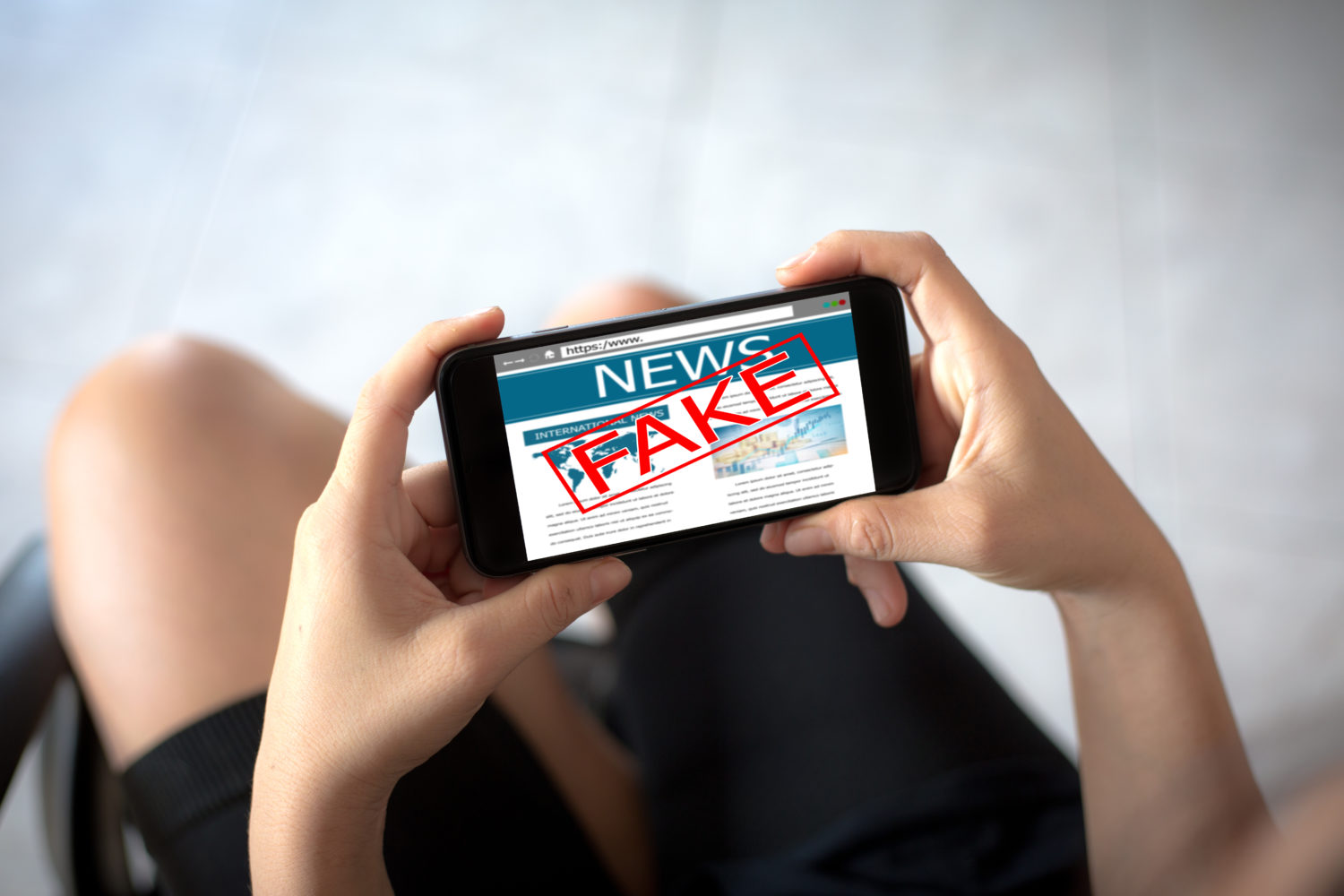The cynical lure of fake screenshots
The surge of misinformation accompanying the coronavirus outbreak has included several cases in which people have been deceived by fake screenshots.
In one case, people circulated a manipulated screenshot of a disease tracker from the Chinese tech company Tencent with death toll numbers significantly higher than the official ones. The number purported to have captured the accidental release of a “real” death toll, the Canadian Broadcasting Corp. reported. It spread quickly on social media and was even reported by news websites outside of China.
In another hoax, debunked by the Indian fact-checker Boom, people circulated a fake screenshot of a “news bulletin” saying that marijuana has been found to cure the virus.
What is it about fake screenshots that makes people vulnerable to thinking they’re real? For one thing, people often use real screenshots to “preserve” something, like a provocative or erroneous tweet, that might be later deleted. A screenshot can be a signal that something “real” has been exposed. Hoaxers exploit that signal with a fake. And if an original can’t be found, people might just assume it was deleted.
“There’s a cognitive hijacking you see with a screenshot,” said Ben T. Decker, a disinformation expert who runs the consultancy Memetica. “You think that because it looks like someone captured it online, it’s real.”
A fake screenshot is also a double deception – falsifying not only the information but also its source, creating a type of imposter hoax that is particularly devious.
Decker said that in his work consulting for media companies, he’s seen a growing number of instances in which news organizations’ headlines are faked in screenshots, which suggests the problem is growing.
He also noted that fake screenshots are relatively easy to make; so in a fast-moving news environment, hoaxers can quickly gin up faked headlines or social media posts to create havoc. This is especially true with cases like the coronavirus, where there is a lack of information but a high level of interest.
“It’s the perfect equation for chaos, and so people start buying into the incitement,” Decker said. “An emotional trigger is activated. Who’s not going to take the bait?”
The bottom line: People need to be reminded that because something looks like a legitimate screenshot doesn’t mean it is one. That may seem obvious in today’s environment, but as long as people keep falling for fakes, it’s worth repeating.
— Susan Benkelman, API
[the_ad id=”667826″]
. . . technology
- Facebook said it removed a number of accounts, pages and groups on Facebook and Instagram for violating its policy against foreign or government interference. “Each of them created networks of accounts to mislead others about who they were and what they were doing. We have shared information about our findings with industry partners,” the company said.
- The company took the action on the same day that the Atlantic Council released new data about Iran’s efforts to shape political conversations online, The Washington Post reported.
- Instagram is directing users to credible information about the coronavirus, wrote BuzzFeed.
. . . politics
- Democrats have been unsuccessfully urging Twitter and Facebook to remove a video tweeted by President Donald Trump that inaccurately showed House Speaker Nancy Pelosi repeatedly tearing up a paper copy of his State of the Union address while he was paying tribute to honorary attendees.
- The controversy is “likely just the start of a year-long standoff between tech companies and lawmakers about the publishing and sharing of altered videos and photos,” wrote The Washington Post’s Kat Zakrzewski.
- QAnon conspiracy adherents are moving from the online world to the real world, Kevin Roose wrote in The New York Times.
. . . the future of news
- Reuters has launched a new fact-checking initiative and will be part of Facebook’s third-party fact-checking program. The news agency said its verification work would be in both English and Spanish and also be published on a dedicated blog.
- Lisa Fazio, an assistant professor of psychology at Vanderbilt University, wrote in Harvard’s new Misinformation Review about how an online experiment showed that participants who paused to explain why a headline was true or false indicated that they were less likely to share false information compared to control participants.
- “This is good news for social media companies who may be able to improve the quality of information on their site by asking people to pause and think before sharing information, especially since the intervention did not reduce sharing of true information (the effects were limited to false headlines),” she wrote.

Fact-checkers from at least three European countries looked into claims that the Chinese government had asked citizens to abandon and/or kill their pets because they would transmit coronavirus.
In Turkey, images of dead cats went viral on Twitter, alarming animal advocates. Using several verification tools, Teyit published a detailed article saying that there is no data to conclude that pets are being killed on a large scale in China.
In France, photos of dogs with protective masks have proliferated on social media in the last few days. So FranceTVInfo researched the topic and reported that the new coronavirus has not been discovered in these animals so far. “There is currently no evidence that pets such as dogs or cats can be infected with the new coronavirus,” pointed out French fact-checkers, quoting the World Health Organization.
Fact-checkers from Maldita.es, in Spain, used the Chinese government’s own resources to show that officials had not encouraged the abandonment of animals. It found a tweet from the Chinese embassy in Spain in which diplomats classified the story about pets being massively killed as “fake news.” “Please do not participate in the propagation of this hoax,” they wrote.
Maldita’s fact-checkers also found: 1) an article published by the Chinese Technology and Science Ministry specifically saying that people should not abandon their pets because there is no evidence that they are responsible for the spread of coronavirus; and 2) a video in which the Chinese state-owned Xinhua newswire service reinforces the same message that there is no reason for killing or abandoning pets.
What we liked: Fact-checking content about China is always challenging, given the dearth of reliable public data. These fact-checks show that it is not an insurmountable obstacle.
— Cristina Tardáguila, IFCN

- The #CoronaVirusFacts / #DatosCoronaVirus alliance created a Twitter list with predefined hashtags to help people to find their fact-checks. Spread the word.
- Twitter outlined its partnership with the U.S. Census Bureau to stem misinformation associated with the decennial population count, the company said in a blog post.
- The New York Times profiled Ben Nimmo, the head of the disinformation monitoring agency Graphika. He told Times reporter Adam Satariano that one of his big worries is “hack-and-leak” operations.
- McKay Coppins’ Atlantic article, “The Billion-Dollar Disinformation Campaign to Reelect the President,” this week is the talk of both the U.S. politics and disinformation communities.
- American Public Media’s Marketplace spoke with Katherine Maher, the chief executive officer of the Wikimedia Foundation, about how it fights misinformation on its Wikipedia platform.
- The so-called “broomstick challenge” is “another social media hoax that exemplifies how quickly pseudoscience and false claims can go viral,” the U.S. space agency NASA said.
That’s it for this week! Feel free to send feedback and suggestions to factually@poynter.org.








